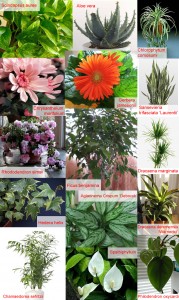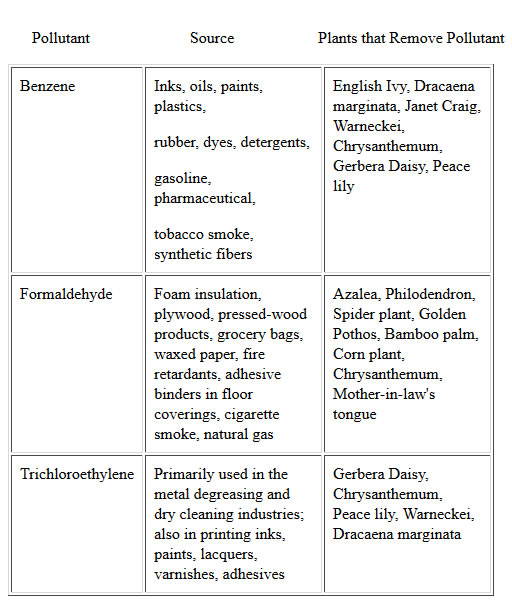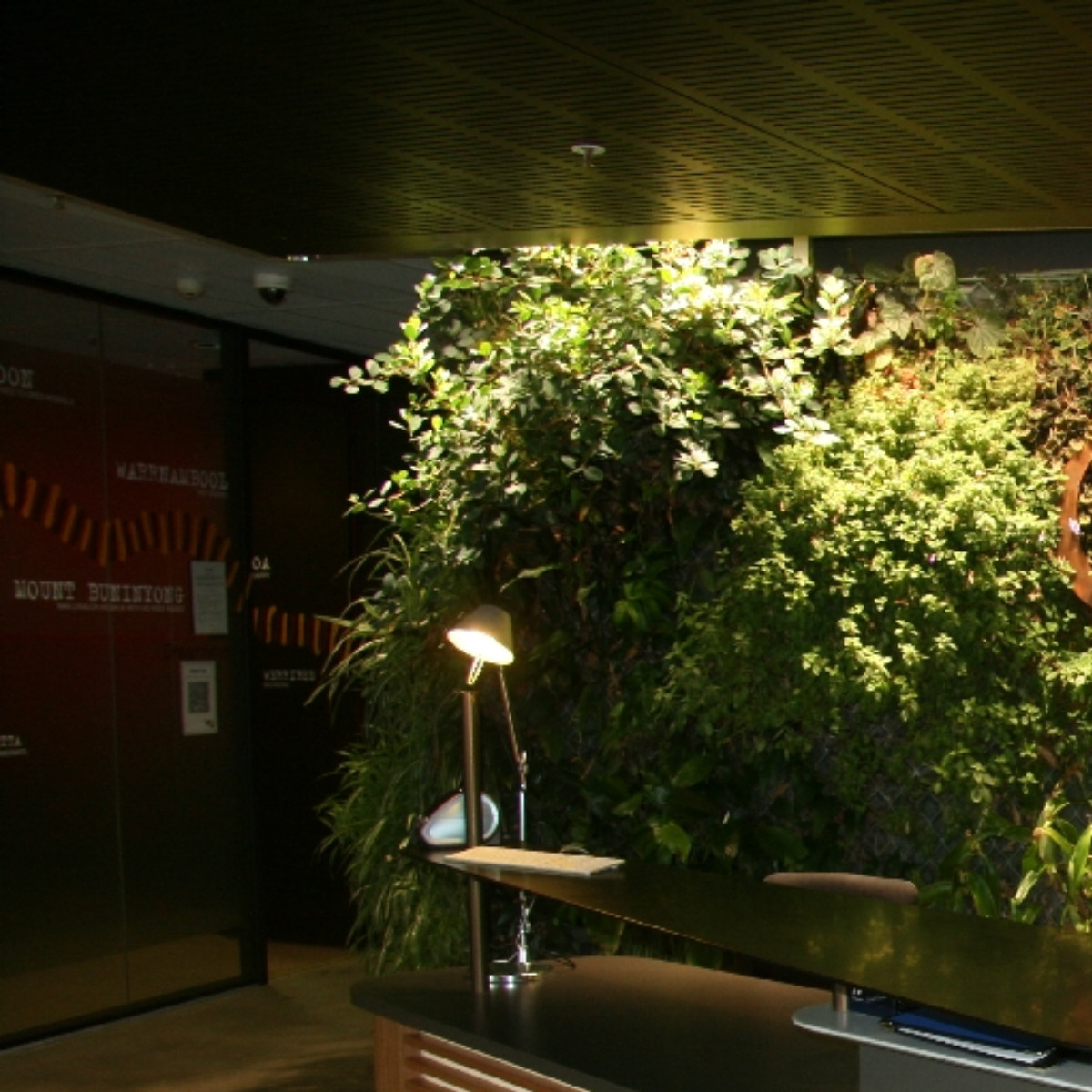NASA and the Associated Landscape Contractors of America studied houseplants as a way to purify the air in space facilities. They found several plants that filter out common volatile organic compounds (VOCs). Lucky for us the plants can also help clean indoor air on Earth, which is typically far more polluted than outdoor air. Houseplants were able to remove up to 87% of air toxins in 24 hours.
Other studies have since been published in the Journal of American Society of Horticultural Science further proving the science.
Indoor plants improve air quality
We all know that plants are the lungs of Mother Earth and they are a very simple and effective way of treating and recycling air and water used by NASA to improve astronauts' life quality when spending months in a small space station, surrounded by synthetic materials that constantly emit chemicals into the cabin. Astonishing, however, was the discovery that plants can remove many of the more than 300 chemicals found in the air of a spacecraft.
Plants and chemical pollution
The NASA study has proven that plants can remove airborne chemicals to some extent. But where do these chemicals go? Scientists of the German National Research Centre for Environment and Health exposed popular indoor plants to formaldehyde, one of the most common indoor air pollutant. They reported that enzymes in the plant leaves break down the toxic chemical into non-toxic components that can be used by the plant. This process is similar to the way a human liver rids the body from toxins. Research also shows that chemicals are translocated into the root system and the adjoining soil, where soil micro-organisms can break down the substances even further.
Plants as dust removal
Airborne chemicals aren't the only health hazards indoors. Scientists of the Washington State University conclude that foliage plants can reduce indoor dust levels by up to 20%. And you don't have to plant a jungle either. The plants they added to an office room occupied only around 5% of the volume.
Do plants promote biological pollution?
A concern could be the growth of fungi in the soil and on decaying plant matter. As long as the plant is healthy, however, this is not the case. The plant has its own defences against micro-organisms. It releases small amounts of its own disinfectant essential oils to control or destroy bacteria and fungi that invade the space between the leaves. We make use of this ourselves whenever we use disinfectants or room deodorizers that contain natural plant oils from, for example, citrus or pine trees. Experiments have shown that plants significantly reduce the number of microbes in indoor air. For example, when pots of citrus trees were added to a room, the air became almost sterile.
Do plants contribute to high humidity?
Another point of concern is the increase in humidity levels. Yes, plants transpire and increase the amount of water vapour in the air. The good news is that the increase depends very much on the humidity level that is in the room in the first place. On humid days, the rate of evaporation is very low and the humidity increase is only marginal. On dry days the plant 'sweats' significantly. This is to our benefit, because the indoor air is very often below the comfortable humidity level, as during the heating period. Cooling a room with an air conditioner also reduces the humidity significantly. Besides dehydration, dry air promotes cracked skin and lips, the drying of the mucus in airways and sinuses, and is a recognized trigger for asthma attacks. Allergens, bacteria and viruses can get easily past the dried-up defense mechanism. There is evidence that cases of the common cold are more frequent when the humidity is low.
The best indoor plants to improve air quality
By adding house plats to your living / work space, you improve the air quality and greatly enhance the health of your and your family. Many houseplants will purify the air in your home, but some more than others. Here is a list of some of the best plants and very popular for your house or office:
- Aloe (Aloe vera)
- Spider plant (Chlorophytum comosum)
- Gerber daisy (Gerbera jamesonii)
- Snake plant (Sansevieria trifasciata 'Laurentii')
- Golden pothos (Scindapsus aures)
- Chrysanthemum (Chrysantheium morifolium)
- Red-edged dracaena (Dracaena marginata)
- Weeping fig (Ficus benjamina)
- Azalea (Rhododendron simsii)
- English ivy (Hedera helix)
- Warneck dracaena (Dracaena deremensis 'Warneckii')
- Chinese evergreen (Aglaonema Crispum 'Deborah')
- Bamboo palm (Chamaedorea sefritzii)
- Heart leaf philodendron (Philodendron oxycardium)
- Peace lily (Spathiphyllum)
[caption id="attachment_463" align="aligncenter" width="179"]
 houseplants for improving indoor air quality[/caption]
houseplants for improving indoor air quality[/caption]The list can continue on and on again. The rate at which the plants metabolizes the substances depends on the growing conditions, such as the available light, the temperature, the humidity, and the nutrients that are available to the plant. Please be aware, however, that plants don't remove the chemicals completely and different plants have different capabilities. A particular plant may be very good in removing formaldehyde, while another is better in destroying benzene.
Studies show that Americans spend ninety percent of their lives indoors, which means that good indoor air quality is vital for good health. Indoor plants will help reduce pollutants and purify the air in your home or office. The more plants you have, the better you will feel! By having plants in your home or office, you create your own micro-climate - the indoor weather.
Recommend number of plant: at least 15-18 good-sized plants(203mm (six- to eight-inch ) pot diameter) for a house or apartment of 167 square meters (1800 square feet).
According to the NASA study, the plants listed below proved effective in removing certain indoor air pollutants.
[caption id="attachment_1137" align="aligncenter" width="512"]
 Top Anti-Pollutant Houseplants[/caption]
Top Anti-Pollutant Houseplants[/caption] 


